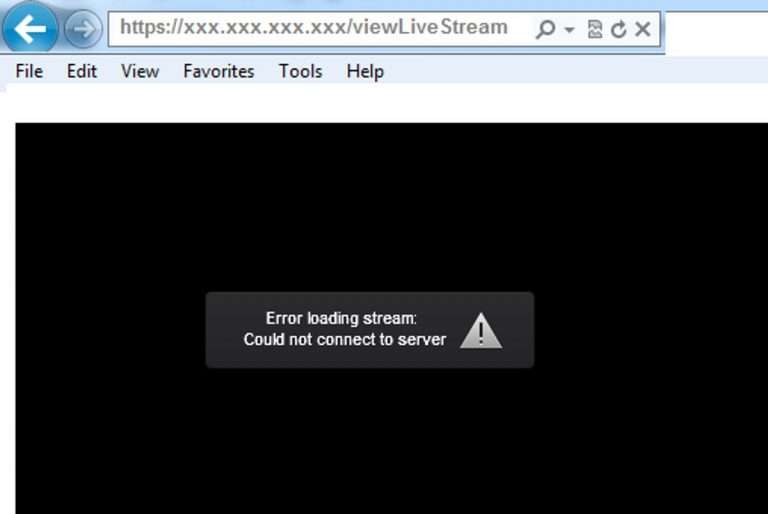RTMP streaming: Everything you need to know
RTMP streaming, or Real-Time Messaging Protocol streaming, is a foundational technology in the world of live broadcasting. Originally paired with Adobe’s Flash Player, RTMP has evolved to serve as a reliable method for live stream ingestion, often working in tandem with HLS (HTTP Live Streaming) for content delivery. This article delves into the intricacies of RTMP streaming, from its technical workings and setup to its future in a post-Flash landscape, offering a comprehensive guide for content creators, streaming professionals, and enthusiasts.
Key Takeaways
- RTMP is a vital protocol for live streaming, ensuring reliable connections and low latency, despite the phasing out of Flash Player.
- The protocol operates over TCP and uses a handshake process to establish a stable connection between the server and the viewer.
- RTMP is commonly used for data ingestion, then transcoded into HLS to support streaming across multiple devices and platforms.
- Content creators can leverage RTMP’s compatibility with various streaming servers and players, as well as advanced features like ABR and security measures.
- The future of RTMP looks promising as it adapts to new technologies and continues to play a significant role in multi-device and professional live streaming.
Understanding RTMP and Its Role in Live Streaming

(image taken from https://www.dreamcast.in/blog/rtmp-streaming/)
The Basics of RTMP
Let’s dive into the essence of RTMP, or Real-Time Messaging Protocol. RTMP is pivotal for live streaming, serving as the bridge between your streaming server and the audience’s devices. Initially designed for the Flash player, RTMP has evolved to become a standard for low-latency, on-demand video streaming. It’s the workhorse behind the scenes, ensuring that your live content is delivered seamlessly and without delay.
RTMP’s efficiency comes from its method of breaking down content into small, manageable packets. These packets are then transmitted over the internet, allowing for a continuous stream that can adapt to varying network conditions. Here’s a simple breakdown of how RTMP operates:
- Your device requests a live stream from the server.
- The server, using RTMP, sends the stream in small data packets.
- Your device receives, buffers, and plays these packets as a continuous stream.
Remember, while RTMP is designed for efficiency, the quality of your stream also depends on the stability of your internet connection and the capabilities of the server.
Despite the emergence of new technologies, RTMP remains a cornerstone in the streaming world, often paired with HLS (HTTP Live Streaming) to enhance performance and security. Whether you’re a content creator or a viewer, understanding RTMP is key to a smooth streaming experience.
Why RTMP Still Matters in the Age of Modern Streaming
You might think that with the demise of Flash Player, RTMP would fade into obscurity. But that’s far from the truth. RTMP is still a cornerstone for live streaming, especially when it comes to the initial stage known as RTMP ingest. This process is crucial as it involves transferring video from the encoder to an online platform or directly to the viewers.
Despite not being the “latest and greatest” protocol, RTMP offers undeniable advantages:
- Low-latency streaming for real-time interaction
- Affordable and widely available RTMP encoders
- Stable connections, ensuring a smooth viewing experience
RTMP’s compatibility with HLS (HTTP Live Streaming) also means that after the initial ingest, your stream can be transcoded to support a variety of devices, maintaining quality and accessibility.
Platforms like Facebook, YouTube, and Periscope continue to leverage RTMP for its low latency and reliability. So, while it may no longer be the star of the show, RTMP remains an essential behind-the-scenes player in the live streaming orchestra.
The Technical Side: How RTMP Works
Diving into the technicalities, RTMP stands for Real-Time Messaging Protocol, and it’s the backbone of much of the live streaming you enjoy. It’s a protocol designed for high-performance transmission of audio, video, and data between a server and a player. Imagine you’re tuning into a live event; RTMP is working hard behind the scenes to ensure that the stream reaches you seamlessly.
When you initiate a stream, your device establishes a connection with a streaming server, often a Flash Media Server. RTMP excels in breaking down the content into small, manageable packets that travel across the internet to your screen. This packetized approach is key to RTMP’s ability to provide continuous streaming, even if some packets encounter issues along the way.
RTMP runs on top of TCP, ensuring that these packets are delivered in order and without loss, which is crucial for maintaining the quality of live broadcasts.
The protocol is not just about delivery; it’s also about ingestion. With the decline of Flash Player, RTMP’s role has shifted more towards ingesting content from the encoder before it’s transcoded into formats like HLS for broader device compatibility. This transition highlights RTMP’s adaptability and its continued relevance in the streaming landscape.
Here’s a quick rundown of why platforms like Facebook, YouTube, and Periscope still rely on RTMP:
- Low latency streaming
- Stable connection
- Reliable security when paired with HLS
As you explore the world of live streaming, understanding RTMP’s function can help you appreciate the complex technology that makes real-time entertainment possible.
The Evolution of RTMP in the Streaming World

(image taken from https://www.synopi.com/what-is-rtmp)
From Flash Player to Modern Platforms
Remember when Flash was everywhere? You couldn’t stream without bumping into Adobe’s Flash Player. But as you’ve likely noticed, Flash has taken its final bow, making room for more versatile and secure technologies. RTMP has evolved from its original role as the backbone of Flash streaming to become a crucial tool for live stream ingestion, even as we’ve waved goodbye to the Flash era.
With the demise of Flash Player, RTMP’s adaptability has been its saving grace. It’s now primarily used to ingest content for streaming, which is then transcoded into HLS to ensure compatibility across a multitude of devices. This transition has been seamless for many broadcasters, thanks to RTMP’s low-latency capabilities and the widespread availability of affordable RTMP encoders.
The shift from Flash to modern platforms didn’t spell the end for RTMP; instead, it marked a new beginning.
Platforms like Facebook, YouTube, and Periscope continue to rely on RTMP, not just for its low latency, but also for the stable connections it provides. Here’s a quick look at why RTMP remains a staple in the streaming world:
- Low-latency streaming: Essential for real-time interaction
- Stable connections: Keeps your stream smooth
- Affordable encoders: Easy on the budget
- Multi-device support: Thanks to HLS compatibility
As we move forward, it’s clear that RTMP will continue to play a significant role in live streaming, adapting to new challenges and technologies along the way.
Adapting to Changes: RTMP’s Transition Over Time
As you’ve navigated the shifting landscape of live streaming, you’ve likely witnessed the evolution of RTMP. Originally the backbone of Flash player-based streaming, RTMP has had to reinvent itself post-Flash. Its new role as an ingest protocol for live streams ensures that it remains indispensable in the streaming ecosystem. With the ability to provide low-latency streaming and support for affordable RTMP encoders, it’s clear why this protocol has stood the test of time.
Adaptability is key in live streaming, and RTMP has shown it in spades. It allows viewers the flexibility to pause, rewind, or join live streams mid-way, much like they would with pre-recorded content. This viewer-centric feature set has helped RTMP maintain its relevance despite the emergence of newer protocols.
RTMP’s adaptability doesn’t stop at viewer interaction. It also extends to its compatibility with HLS, ensuring that streams can be delivered across multiple devices without a hitch.
Here’s a quick look at how RTMP has adapted over time:
- Transitioned from a delivery to an ingest protocol
- Maintained low-latency streaming capabilities
- Supported by large platforms like Facebook and YouTube
- Evolved to work in tandem with HLS for broader device support
As you continue to delve into the world of live streaming, keep in mind that RTMP’s ability to adapt is what keeps it at the forefront of technology, ensuring your content reaches your audience with the quality and immediacy they expect.
RTMP’s Compatibility with HLS for Enhanced Streaming
You might already know that RTMP, or Real-Time Messaging Protocol, has been a cornerstone in live streaming, especially during the era of Flash player dominance. But as technology evolves, so does the way we stream. RTMP is now primarily used for ingesting content into streaming platforms, where it’s then transcoded into HLS (HTTP Live Streaming) for delivery. This pairing of RTMP with HLS is not just a happy marriage of convenience; it’s a strategic choice that enhances your streaming experience.
Why combine RTMP with HLS? Here’s a quick rundown:
- RTMP excels in low-latency transmission, making it ideal for live events where every second counts.
- HLS is celebrated for its high compatibility with a multitude of devices and its robust security features.
- Together, they ensure a smooth, secure, and timely delivery of your live content across various platforms and devices.
By leveraging the strengths of both RTMP and HLS, you can enjoy the best of both worlds: the immediacy of RTMP and the reach and reliability of HLS.
Remember, while RTMP may not be the sole protocol you rely on for delivery anymore, its role in the streaming ecosystem is still vital. It’s the bridge between your live content and the diverse audience waiting to engage with it. So, when you’re setting up your stream, consider how RTMP and HLS can work together to give your viewers an enhanced streaming experience.
Setting Up Your Stream with RTMP

Choosing the Right Streaming Server
When you’re ready to take your live streaming to the next level, selecting the right streaming server becomes crucial. Your choice will impact the quality and reliability of your live streams, so it’s important to weigh your options carefully. You might be tempted to build your own server, but remember, this requires significant technical expertise and resources. Alternatively, you can choose from a variety of platforms that offer different features and levels of control.
Here’s a quick rundown of your main options:
- Free platforms: Ideal for beginners or those streaming casually. Examples include Twitch, YouTube, and Facebook.
- Paid online video platforms: Offer more power, reliability, and features. Kaltura is one such service.
- DIY servers: For those who want complete control and have the necessary technical skills and resources. Software such as Ant Media Server and Wowza enable your own media server.
Before you dive in, consider the bandwidth requirements, security, and the potential need for features like adaptive bitrate streaming (ABR) and uninterrupted power supplies.
Ultimately, your decision should align with your technical abilities, budget, and streaming goals. For a detailed comparison of the best live streaming platforms, you might want to check out the article, ‘Comparing the 23 Best Live Streaming Platforms in 2024 – Dacast‘. It can guide you in making an informed choice for your OTT business.
Configuring Your Media Player for RTMP
Once you’ve chosen a media player that supports RTMP, like the versatile VLC, you’re ready to connect to your live stream. Navigate to ‘Open Network Stream’ under the ‘Media’ menu and enter your stream key to start watching. Remember, the stream key is your access pass to broadcasting, so keep it secure!
VLC isn’t just for viewing; it’s also a powerful tool for monitoring your stream’s health. Keep an eye on the playback to ensure your audience is getting the best experience possible. If you’re encountering issues, VLC’s network stream feature can be a great diagnostic tool.
Configuring your media player correctly is crucial. It’s the bridge between your content and your viewers, so take the time to get it right.
While the basics will get you streaming, you might want to delve into additional configurations for a more robust setup. Consider enhancing your stream with features like Adaptive Bitrate (ABR) for smoother playback across various internet speeds, and don’t forget to implement security measures to protect your content. Here’s a quick checklist to guide you through the essentials:
- Ensure your media player is RTMP compatible.
- Securely obtain and enter your stream key.
- Test the stream for stability and quality.
- Explore advanced settings for ABR, security, and monetization.
By following these steps, you’ll be well on your way to delivering a professional-grade streaming experience to your audience.
Advanced Settings: Security and Monetization Features
When you’re setting up your stream, you’ll want to dive into the advanced settings to ensure your content is secure and that you’re making the most out of your monetization opportunities. Security is paramount, and with features like Data Rights Management (DRM), you can safeguard your streams against unauthorized use. But it’s not just about keeping your content safe; it’s also about making it profitable.
Monetization is a key aspect of live streaming, and you have several options to choose from. Whether you prefer AVOD (ad-based), SVOD (subscription-based), or TVOD (transaction-based), select a platform that aligns with your goals. Here’s a quick rundown of what you might consider:
- APIs and SDKs for seamless integration
- A variety of monetization options
- Live stream controls for user engagement
- Enterprise-grade security features
Remember, not every platform will offer the same level of control or monetization features. Choose wisely based on your technical expertise and the type of audience you aim to capture.
With the right setup, you can create a streaming experience that’s not only secure but also lucrative. Look for platforms that offer flexible plans and strong technical support to keep your service running smoothly. And don’t forget, the best OBS Studio settings for broadcasting can make a significant difference in the quality of your streams.
RTMP vs. RTSP: Understanding the Differences
The Technical Distinctions Between RTMP and RTSP
When you’re delving into the world of live streaming, understanding the technical distinctions between RTMP (Real Time Messaging Protocol) and RTSP (Real Time Streaming Protocol) is crucial. RTMP is designed for high-performance live broadcasting, particularly where low latency is essential, making it a favorite for live events and interactive broadcasts. On the flip side, RTSP is the efficient option for localized streaming, often used in surveillance systems and for controlling playback from devices like CCTV and IP cameras.
RTMP, based on TCP, excels in delivering content reliably at scale, while RTSP provides more granular control over media streams.
Here’s a quick rundown of their differences:
- Compatibility: RTMP works seamlessly with a variety of players and CDNs, ensuring your content reaches a broad audience without hiccups. RTSP, while not as widespread, offers precise control, especially in closed-circuit systems.
- Latency: If you’re aiming for real-time interaction, RTMP’s lower latency has you covered. RTSP can offer low latency too, but it may not always keep up with the immediacy RTMP can provide.
Remember, choosing the right protocol hinges on your specific streaming needs and the experience you want to deliver to your audience.
Comparing Latency and Stability in RTMP and RTSP
When you’re diving into the world of live streaming, understanding the impact of latency and stability on your viewer’s experience is crucial. RTMP is renowned for its low latency, ensuring that your audience enjoys a near real-time experience. This is particularly vital for interactive content, where every second of delay can disrupt the flow of communication.
Latency isn’t the only factor, though. Stability is key to maintaining a smooth stream. RTMP’s reliance on TCP (Transmission Control Protocol) contributes to a stable connection, minimizing the risk of interruptions. RTSP, while capable of using TCP for stability, can also opt for UDP (User Datagram Protocol), which might increase speed but at the cost of reliability.
When choosing between RTMP and RTSP, consider the nature of your content and the expectations of your audience. For most live streaming scenarios, RTMP’s balance of low latency and high stability makes it the preferred choice.
Here’s a quick comparison to help you weigh your options:
- RTMP:
- Widely compatible and stable
- Typically 3-5 seconds of latency
- Requires a Flash Media Server for content distribution
- RTSP:
- Suited for IP cameras and real-time applications
- Latency can be less than two seconds in optimal conditions
- Offers granular control over media streams
Choosing the Right Protocol for Your Streaming Needs
When you’re delving into the world of live streaming, understanding the nuances of various protocols is crucial. Choosing the right protocol can make or break your streaming experience. RTMP and RTSP are two heavyweight contenders in the arena of video streaming protocols, each with its own set of strengths.
RTMP, known for its compatibility and low latency, is ideal for live events and interactive broadcasts. On the other hand, RTSP shines in scenarios requiring direct camera access, like surveillance systems. It’s not just about picking one; sometimes, the best approach is to use a combination of both to leverage their unique benefits.
- RTMP: Low latency, wide compatibility, requires Flash Media Server
- RTSP: Suited for IP cameras, local streams, specific use cases
Remember, the protocol you choose should align with your streaming goals and the technical requirements of your project. It’s about finding the right balance between quality, latency, and stability.
Ultimately, your decision should be informed by the kind of content you’re streaming, the audience you’re targeting, and the infrastructure you have in place. Whether you’re a seasoned broadcaster or just starting out, taking the time to understand these protocols will pay off in delivering a seamless streaming experience to your viewers.
Maximizing Your Streaming Experience with RTMP
Leveraging RTMP for Low Latency Streaming
When you’re aiming for that real-time interaction in your live streams, RTMP is your go-to protocol. Low latency is crucial for maintaining a lively and engaging experience, especially during events like live sports, gaming, or auctions where every second counts. With RTMP, you can expect latency as low as 3-5 seconds, making the conversation between you and your audience seamless.
Remember, the key to low latency streaming is not just the protocol, but also the configuration of your setup. Ensure your encoder settings are optimized for RTMP to get the best results.
Here’s a quick checklist to help you leverage RTMP for low latency:
- Verify your encoder supports RTMP and is configured correctly.
- Choose a streaming platform that accepts RTMP ingest.
- Test your stream beforehand to check for latency and make adjustments.
- Consider pairing RTMP with HLS for a balance of low latency and broad compatibility.
By following these steps and understanding the technical aspects of RTMP, you can create a more interactive and enjoyable experience for your viewers.
Ensuring a Stable Connection for Uninterrupted Viewing
To guarantee a seamless live streaming experience, you need to ensure your connection is as stable as possible. This means fewer interruptions and a smoother viewing experience, which is crucial for live events where every moment is important. A stable connection helps prevent the stream from freezing or crashing, avoiding the frustration of viewers missing key moments.
Here are some tips to help you maintain a stable connection:
- Check your network requirements: A stable internet connection is essential. Aim for an adequate, constant upload stream to avoid stuttering and lagging for your viewers.
- Opt for wired connections: While WiFi and LTE might seem convenient, they can be unreliable. A hardwired connection is less prone to interference and typically offers better Quality of Service (QoS).
- Use progressive signals: Progressive signal flows are preferable over interlaced video, as they provide better playback quality and avoid motion artifacts.
Remember, the adequate and appropriate use of equipment and streaming protocols is a must for a high-quality stream.
Lastly, consider the location of your content delivery networks (CDNs). Distributed CDNs can store content closer to your viewers, reducing latency and enhancing the viewing experience. For instance, a viewer in New York would have a smoother experience with content hosted in Baltimore compared to content hosted in Japan.
Tips and Tricks for Optimizing RTMP Streams
When you’re diving into the world of live streaming, knowing how to optimize your RTMP streams can make all the difference. Keep your audience engaged by ensuring a smooth viewing experience. For starters, consider your output resolution. On a low internet bandwidth, you can opt for 1280×720, which strikes a good balance between quality and performance. Most viewers won’t notice the difference, but your stream will be more stable.
Pro settings can elevate your stream quality. Dive into the advanced settings of your streaming software and adjust the Color Format to NV12, Color Space to 709, and Color Range to Full. These tweaks can enhance the visual fidelity of your stream.
Remember, the right tools and settings are crucial, but so is having a plan for any hiccups. Always have a tech team member on standby during your event to assist with RTMP settings and configurations. And don’t forget to monitor your stream with a reliable media player that supports RTMP, like VLC.
Lastly, consider additional configurations for a more robust streaming setup. Implement security features, monetization options, and Adaptive Bitrate technology (ABR) to cater to a wider audience without compromising on stream quality.
The Future of RTMP in a Post-Flash Era
How RTMP is Adapting to New Technologies
As you delve into the world of live streaming, you’ll find that RTMP is not just surviving; it’s evolving. With the sunset of Flash Player, RTMP’s role has shifted from delivering content to being a crucial part of the ingest process. This means RTMP now primarily facilitates the transfer of video from your encoder to your streaming platform or server.
RTMP’s adaptability is its superpower. It’s pairing with HLS (HTTP Live Streaming) to ensure that your streams are not only reaching viewers with low latency but also with the reliability and security that modern audiences demand.
Platforms like Facebook, YouTube, and Periscope continue to support RTMP due to its steadfast connection and low latency capabilities. This enduring support underscores RTMP’s relevance in a post-Flash era. Moreover, RTMP encoders, widely used for their affordability and efficiency, are still in high demand.
- Low Latency: RTMP excels in reducing delays, ensuring real-time interaction with viewers.
- Stable Connection: A robust protocol that maintains stream integrity even over less reliable networks.
- Adaptive Bitrate Streaming: RTMP’s compatibility with ABR allows for dynamic adjustment of video quality based on the viewer’s connection speed.
RTMP’s journey is a testament to its resilience and ability to adapt to the ever-changing landscape of technology. As you continue to explore the possibilities of live streaming, keep an eye on RTMP’s ongoing evolution and how it can benefit your streaming projects.
The Role of RTMP in Multi-Device Streaming
In the world of live streaming, you want your content to reach as many viewers as possible, regardless of the device they’re using. RTMP excels in multi-device streaming, ensuring that whether your audience is on a desktop, a smartphone, or lounging in front of a smart TV, they get a seamless experience. This broad compatibility makes RTMP a versatile choice for content creators and broadcasters.
When you stream using RTMP, you’re using a protocol that’s been adapted to work efficiently across different platforms. It’s not just about being able to connect; it’s about delivering a high-quality stream that adapts to the varying capabilities of each device. For instance, RTMP’s compatibility with HLS (HTTP Live Streaming) means that your stream can be transcoded into a format that’s ideal for multi-device support, combining the benefits of both protocols.
Remember, the key to successful multi-device streaming is not just in the protocol you choose, but also in how you configure it. Ensuring that your RTMP settings are optimized for the devices you’re targeting is crucial.
Here’s a quick checklist to consider for multi-device RTMP streaming:
- Verify that your streaming server supports RTMP and HLS transcoding.
- Test your stream on different devices before going live.
- Monitor your stream’s performance and be ready to adjust settings as needed.
What’s Next for RTMP?
As you’ve seen, RTMP has been a stalwart in the streaming world, adapting to the changing landscape even after the sunset of Flash Player. The protocol’s future hinges on its adaptability and the continuous demand for low-latency streaming. With the end of Flash, RTMP’s role has shifted from a delivery mechanism to a powerful ingest tool, ensuring that your live content is captured and transmitted swiftly to your audience.
Ingesting content efficiently is crucial, and RTMP excels at this, especially when paired with HLS for delivery. This combination offers the best of both worlds: the low latency of RTMP and the broad compatibility of HLS. As streaming technology evolves, RTMP is expected to maintain its position as a key player in the ingest process, thanks to its established infrastructure and the widespread availability of affordable RTMP encoders.
The key to RTMP’s longevity will be its ability to integrate with emerging technologies while maintaining its core strengths.
Looking ahead, RTMP is likely to see enhancements in security, customization, and multi-platform delivery. Here’s a quick glimpse at potential developments:
- Improved security protocols to safeguard your streams
- Customizable metadata options for richer viewer engagement
- Streamlined workflows for multi-platform content delivery
RTMP’s journey is far from over. It’s poised to continue evolving, ensuring that your streams are not just live, but lively and engaging.
Professional Live Streaming with RTMP
Tools and Services for High-Quality RTMP Streaming
To ensure your live streams are of the highest quality, it’s crucial to choose the right tools and services that leverage the power of RTMP. Selecting a robust streaming service that supports RTMP can make all the difference in delivering smooth, high-definition content to your audience. Look for platforms that offer adaptive bitrate streaming, as this will adjust the quality of your stream in real-time based on each viewer’s internet speed, ensuring the best possible experience.
Reliability is a cornerstone of RTMP streaming, and it’s important to partner with services that provide stable connections and low latency. Services like Castr allow you to use RTMP alongside other protocols like RTSP, giving you the flexibility to reach a wider audience without sacrificing quality.
- Encoder settings are vital for RTMP streaming. Ensure your encoder is configured correctly for RTMP(S) to avoid any hiccups during your broadcast.
- Consider hardware-based encoders for a consistent set of configuration parameters, which can be crucial for professional-grade streaming.
Remember, the compatibility of RTMP with various players and CDNs is a key factor in achieving reliable and high-quality streams. Take the time to research and choose a service that aligns with your streaming goals and technical requirements.
24/7 Support for Your Live Streaming Projects
When you’re knee-deep in the world of live streaming, having round-the-clock support can be a game-changer. Imagine you’re in the middle of broadcasting an event and suddenly, you hit a snag. That’s where 24/7 support comes in, ensuring that no matter the hour, help is just a message away. Your peace of mind is priceless, especially during those late-night streams or international broadcasts that cross time zones.
With a dedicated support team, you can access a wealth of resources, from troubleshooting guides to live chat assistance. Here’s what you can typically expect:
- Immediate assistance through live chat or phone support
- Access to a comprehensive help center with articles and tutorials
- The option to book one-on-one meetings with streaming experts
Remember, the quality of your support can directly influence the success of your live streaming endeavors. Don’t underestimate the value of having experts on standby.
Whether you’re a musician streaming a concert, a developer integrating streaming into an app, or a business broadcasting to a global audience, the assurance of 24/7 support is invaluable. It’s not just about solving problems; it’s about continuous improvement and learning how to produce a 24/7 live stream effectively.
How to Get Started with Professional RTMP Streaming
Embarking on professional RTMP streaming might seem daunting, but with the right tools and a bit of know-how, you’ll be broadcasting in no time. First things first, you’ll need an RTMP encoder. This is the software or hardware that converts your video into a format suitable for streaming. OBS Studio is a popular, free option that many streamers swear by. You can download it from OBS Project.
Once you’ve got your encoder set up, it’s time to connect to your streaming server. You’ll need a stream key, which is essentially a password that allows you to stream to your chosen platform. Here’s a simple checklist to ensure you’re ready to go live:
- Install and configure your RTMP encoder (like OBS Studio)
- Obtain your stream key from your streaming platform
- Set up your media player (VLC is a great option) to monitor your stream
- Consider additional configurations for security, monetization, and Adaptive Bitrate (ABR) technology
Remember, the key to a successful stream is not just the technology but also the preparation. Make sure to test your setup before going live to iron out any kinks.
While the technical side of things is crucial, don’t forget the content itself. Your audience is there for an engaging experience, so ensure your stream is visually and audibly clear and compelling.
RTMP for Content Creators: A Guide to Getting Live
The Importance of Stream Keys in RTMP
When you’re gearing up to go live, understanding the role of stream keys in RTMP is crucial. Think of a stream key as a password that grants you access to broadcast on a streaming platform. Without the correct stream key, your content simply won’t reach your audience. It’s the bridge between your encoder and the streaming service.
To get started, you’ll typically navigate to the RTMP Stream tab of your chosen platform and generate your unique RTMP setup. This will include your stream key and the necessary URLs. Remember, the stream key is sensitive information, and sharing it could compromise the security of your stream.
It’s essential to keep your stream key confidential to prevent unauthorized use and potential stream hijacking.
If you encounter issues with your primary server, having a fallback provider can be a lifesaver. Platforms often offer a main RTMP server and an alternative to ensure your stream remains uninterrupted. Here’s a simple breakdown:
- Primary Server: Your main connection point for streaming.
- Fallback Server: An alternative in case the primary server fails.
By securing your stream key and understanding its importance, you’re setting the stage for a successful live event.
Building an Audience with Reliable RTMP Streams
Building a loyal audience hinges on delivering a smooth and uninterrupted streaming experience. Reliability is the cornerstone of successful live streaming, and RTMP is renowned for its stable connections. This stability is achieved through a process akin to a digital handshake, ensuring a robust link between your streaming server and your viewers.
Audience engagement is key to growing your viewership. You must be aware of your audience and understand their needs before you can develop further engagement strategies. Here’s a simple list to help you start:
- Identify your target demographic
- Analyze viewer data for insights
- Tailor content to audience preferences
- Interact with viewers during streams
- Encourage viewer participation
Remember, consistency in your streaming schedule is just as important as the content you deliver. Regular streams at predictable times build viewer habits and loyalty.
With RTMP’s compatibility with various video codecs, you can rest assured that your video quality remains high, even when streaming large video files. This protocol not only maintains video fidelity but also supports Adaptive Bitrate streaming (ABR), which adjusts video quality in real-time based on viewer’s bandwidth, ensuring the best possible experience.
Monetizing Your Live Streams Through RTMP
When you’re ready to turn your passion into profit, RTMP streaming offers a gateway to monetization. By integrating pay-per-view or subscription models, you can start earning from your live content. Here’s a simple guide to get you started:
- Choose a streaming platform that supports RTMP and offers monetization features.
- Set up your encoder with the platform’s stream key and server URL. Remember, using an encoder allows for more professional streams with external cameras and mics.
- Configure your media player, like VLC, to monitor your stream. Just click ‘Open Network Stream’ under ‘Media’ and enter your stream key.
- Explore additional configurations for security and Adaptive Bitrate (ABR) to enhance viewer experience.
Remember, the quality of your stream directly impacts your revenue potential. Invest in reliable equipment and test your setup thoroughly to ensure a smooth streaming experience.
Finally, keep an eye on analytics provided by your streaming platform. Understanding viewer behavior and preferences can help you tailor your content and maximize earnings.
Troubleshooting Common RTMP Streaming Issues
Dealing with Connectivity Problems
When you’re live streaming via RTMP, connectivity is key. An unstable internet connection can lead to a frustrating experience for your viewers, with symptoms like blurry, freezing, or low-quality playback. To ensure a smooth stream, consider these steps:
- Use a wired connection whenever possible to avoid the unpredictability of WiFi or LTE.
- If you’re on a shared network, coordinate with IT to reserve bandwidth for your stream.
- Conduct a thorough bandwidth test before your event to anticipate any issues.
Remember, bandwidth is like the size of a pipe through which your data flows. If the pipe is too narrow and the data too abundant, your stream will suffer.
Building a Content Delivery Network (CDN) can also enhance your streaming quality by reducing the distance between the source and your viewers, ensuring faster loading times and a more stable connection.
Stream Quality and Bandwidth Considerations
When you’re gearing up for a live stream, understanding the relationship between stream quality and bandwidth is crucial. Your stream’s quality is heavily dependent on the available upload speed of your internet connection. To ensure a smooth viewing experience, you’ll want to aim for an upload speed that’s at least 1.5 times the bitrate of your stream.
It’s essential to test your network’s upload bandwidth before going live. This can help you avoid the frustration of a buffering stream. If you’re on a shared network, like in an office, consider asking your IT department to reserve bandwidth for your streaming activities. For the most stable connection, a wired internet setup is recommended over a wireless one.
Here are our recommendations based on the minimum upload speeds required to support each option:
- 270p: 1.5mbps upload
- 360p: 2mbps upload
Remember, bandwidth is like the size of a pipe through which your data flows. If the pipe is too narrow and the data too large, your stream will suffer. Keep an eye on your bitrate, FPS, and resolution to maintain a balance that fits within your bandwidth capabilities.
Finding Help When You’re Stuck
When you hit a snag with your RTMP stream, it’s crucial to know where to turn for assistance. Don’t panic; help is often just a few clicks away. Start by exploring the Knowledge Base and FAQ sections of your streaming service’s support page. These resources are packed with troubleshooting guides and tips from experts.
If you’re still struggling, consider reaching out for direct support:
- 24/7 Support: Available through most streaming platforms, offering round-the-clock assistance.
- Phone Support: Speak directly with a technician for more personalized help.
- Professional Services: For complex issues, professional services can provide in-depth technical support.
Remember, the key to effective troubleshooting is systematic problem-solving. Take it step by step, and you’ll find a solution.
If you’re dealing with a specific platform like Microsoft Teams, look for articles titled with your issue, such as ‘Troubleshooting live events in Microsoft Teams‘. These can provide platform-specific advice that’s invaluable.
Exploring Advanced RTMP Features for Enhanced Performance
Adaptive Bitrate Streaming (ABR) with RTMP
When you’re diving into the world of live streaming, you’ll want to ensure your audience enjoys the best possible viewing experience, regardless of their internet connection. That’s where Adaptive Bitrate Streaming (ABR) comes into play. ABR technology automatically adjusts the video quality to match the viewer’s bandwidth and device capabilities, providing a smooth streaming experience without buffering.
To get started with ABR, you’ll need to configure your encoder to generate multiple bitrates of your live stream. This might sound complex, but it’s a straightforward process:
- Choose an encoder that supports ABR.
- Set up different bitrate profiles (e.g., 720p, 480p, 360p).
- Ensure your streaming server can handle multiple bitrates.
- Test your stream across different devices and network conditions.
Remember, the goal of ABR is to deliver the highest quality stream that the viewer’s connection can handle, without causing interruptions or excessive buffering.
By implementing ABR with RTMP, you’re not just enhancing the viewer’s experience; you’re also preparing your stream for a wide range of internet speeds and devices. It’s a win-win for both you and your audience.
Securing Your RTMP Streams
When you’re live streaming, security is paramount. Secure your RTMP streams by employing RTMPS (Real-Time Messaging Protocol Secure), which adds an extra layer of encryption to safeguard the transmitted data. This is especially crucial if you’re handling sensitive content or wish to protect your intellectual property.
Remember, a secure stream is a trusted stream. Your viewers expect a safe viewing experience, and RTMPS is your first line of defense against potential breaches.
To enhance your stream’s security, follow these steps:
- Ensure your streaming software or service supports RTMPS.
- Configure your encoder to use RTMPS instead of RTMP.
- Regularly update your streaming software to patch any security vulnerabilities.
- Use a dedicated streaming server with robust security features.
By taking these measures, you’ll not only protect your content but also build trust with your audience, ensuring they return for future streams.
Utilizing RTMP for Multi-Platform Delivery
In the dynamic world of live streaming, you want to ensure your content reaches as wide an audience as possible. With RTMP, you can achieve just that by multistreaming to various platforms simultaneously. Imagine your live event broadcasting on YouTube, Facebook, and Instagram, all at once, without a hitch. That’s the power of RTMP for multi-platform delivery.
RTMP’s adaptability makes it a favorite among content creators and broadcasters. It’s not just about reaching more viewers; it’s about engaging with them where they are most comfortable. Here’s a quick rundown of how you can utilize RTMP for your multi-platform streaming needs:
- Ensure your streaming software supports RTMP multistreaming.
- Configure each platform’s stream settings within your software.
- Use a reliable internet connection to maintain stream quality across all platforms.
- Monitor your streams to adjust settings in real-time if necessary.
Remember, while RTMP is robust, your stream’s success also depends on the strength of your internet connection and the capabilities of your streaming software.
By following these steps, you can maximize your reach and provide a seamless viewing experience for your audience, no matter their preferred platform. And if you’re looking for recommendations, consider checking out the ‘The 10 Best Multistreaming Platforms in 2024: A Comparison – Dacast’ article, which highlights how multistreaming can expand your live stream’s presence across platforms like LinkedIn, Twitch, and Mixcloud.
Wrapping Up RTMP Streaming
As we’ve journeyed through the ins and outs of RTMP streaming, it’s clear that this protocol remains a cornerstone in the world of live broadcasting. Despite the phasing out of Flash Player, RTMP’s role in ensuring a stable and low-latency connection for stream ingestion is as vital as ever. Whether you’re setting up a stream for a large audience on platforms like YouTube or Facebook, or you’re fine-tuning a local RTSP stream, understanding RTMP is key to a smooth streaming experience. Remember, the right setup with RTMP can make all the difference in delivering high-quality content to your viewers. So, keep this guide handy, and you’ll be well on your way to mastering the art of live streaming with confidence and ease.
Frequently Asked Questions
What is RTMP?
RTMP, or Real-Time Messaging Protocol, is a protocol designed for transferring multimedia data over the Internet. It was originally created to connect a server to a Flash player and is known for enabling low latency, on-demand video streaming.
How does RTMP work for live streaming?
RTMP works by establishing a stable connection through a three-way handshake between the streaming server and the viewer. It then transmits multimedia content in small data packets over TCP, ensuring reliable and segmented delivery for live streams.
Why is RTMP still relevant in modern streaming?
Despite the decline of Flash Player, RTMP remains relevant due to its low latency support, reliability, and compatibility with HLS for multi-device streaming, making it a preferred choice for many large streaming platforms.
What is the difference between RTMP and RTSP?
RTMP is widely used for live streaming with low latency on various devices and browsers, while RTSP is more suited for IP cameras, local streams, and targeted streaming within local networks.
How do I set up my media player for RTMP streaming?
To set up your media player for RTMP streaming, use a player like VLC that supports RTMP. Connect to your stream using the ‘Open Network Stream’ feature and enter your stream key.
Can I use RTMP and RTSP together?
Yes, with certain streaming solutions, you can use both RTMP and RTSP, allowing you to enjoy benefits such as adaptive streaming bitrate for the best quality and viewer experience.
What are some advanced RTMP features I can use?
Advanced RTMP features include Adaptive Bitrate Streaming (ABR), secure content distribution, and the ability to deliver streams to multiple platforms simultaneously.
What should I consider when choosing between RTMP and RTSP?
When choosing between RTMP and RTSP, consider the importance of reaching a wide online audience versus targeted or local streaming. RTMP is ideal for large events or shows, while RTSP is better for specific viewers or local networks.







